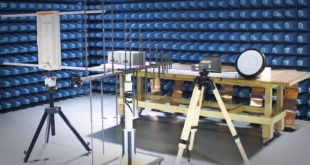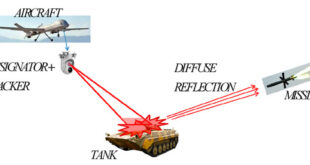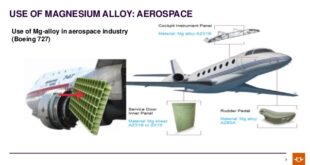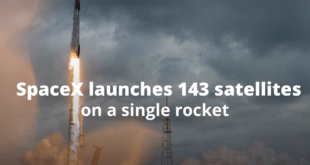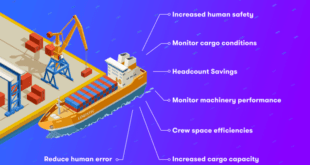Medical assistants are health care professionals who assist doctors in clinics and medical offices. Medical assistants work alongside physicians, mainly in outpatient or ambulatory care facilities, such as medical offices and clinics. A medical assistant (or MA) is often considered a physician’s right hand. These allied health professionals assist in …
Read More »Yearly Archives: 2022
MIL-STD 461 EMI/EMC standards ensure safety and mission success of Military, Aeropace and Space vehicles
Modern computers operate in a “noisy” electronic environment. They are surrounded by powerful electromagnetic interference (EMI) generated by radios, radar, microwave transmitters, other computers, and a wide assortment of electronic equipment. Electromagnetic Interference (EMI) is electromagnetic energy that disturbs, interrupts, obscures or degrades the effective performance of the electrical equipment. Electromagnetic …
Read More »Semi-Active Lasers/Passive seeker technology
Guided missiles work by tracking the moving target’s location in space by specific methods (e.g. using a radar or following its heat signature), chasing it down, and finally hitting it with accuracy. Guidance systems in missiles can be of various types, which serve different operational purposes. Homing guidance systems control the …
Read More »Magnesium Alloys in Military Applications
Magnesium alloys are mixtures of magnesium (the lightest structural metal) with other metals called an alloy. Magnesium alloys are well-known for being the lightest structural alloys. They are made of magnesium, the lightest structural metal, mixed with other metal elements to improve the physical properties. These elements include manganese, aluminum, …
Read More »Dedicated launcher technology race for LEO microsatellites clusters
Global interest in nano and microsatellites (< 100kg) is increasing. The miniaturization of electronics, together with reliability and performance increase as well as reduction of cost, have allowed the use of commercials-off-the-shelf in the space industry, fostering the Smallsat use. Many nanosatellites (<10 kg) are used for educational purposes, and …
Read More »Quantum frequency converter critical components for Military hackproof Quantum communication Networks
Quantum technology (QT) applies quantum mechanical properties such as quantum entanglement, quantum superposition, and No-cloning theorem to quantum systems such as atoms, ions, electrons, photons, or molecules. Quantum bit is the basic unit of quantum information. Whereas in a classical system, a bit is either in one state or …
Read More »US DOD’s DIU accelerating DOD adoption of commercial technologies, transformation of military capacity and capability and strengthen the national security innovation base
Historically and during the cold war military technology programs drove many commercial successes like Nuclear power, GPS, Internet, Computers, Jet Engines, semiconductor and integrated circuits, and these were driven by Department of Defense’s comprehensive and well-resourced investment plans. The internet grew out of a military research project. Global Positioning System …
Read More »Autonomous shipping or Autonomous shipping or Maritime Autonomous Surface Ships (MASS) technologies
Autonomous ships refer to the ships that are remote built ships where operations are performed by remote control mechanism. These operations are operated by the humans located at the shore. Autonomous requires high quality systems and reliable communication system which work with the assistance of connectivity, control algorism and sensor …
Read More »Solar power during Nights
Increasing energy demand, environmental issues and limited availability of fossil fuels are demanding the research on sustainable and renewable energy resources. The sun is ultimate source to accomplish clean energy demand and photovoltaics, also known as solar PV, have been growing exponentially to harness it. Solar radiation often called …
Read More »Global air pollution threat requires IoT-based Air quality monitoring solutions
Atmospheric conditions continue to deteriorate each year due to the growth of civilization and increasing unclean emissions from industries and automobiles. Although air is an indispensable resource for life, many people are indifferent to the severity of air pollution or have only recently recognized the problem. According to the …
Read More » International Defense Security & Technology Your trusted Source for News, Research and Analysis
International Defense Security & Technology Your trusted Source for News, Research and Analysis
